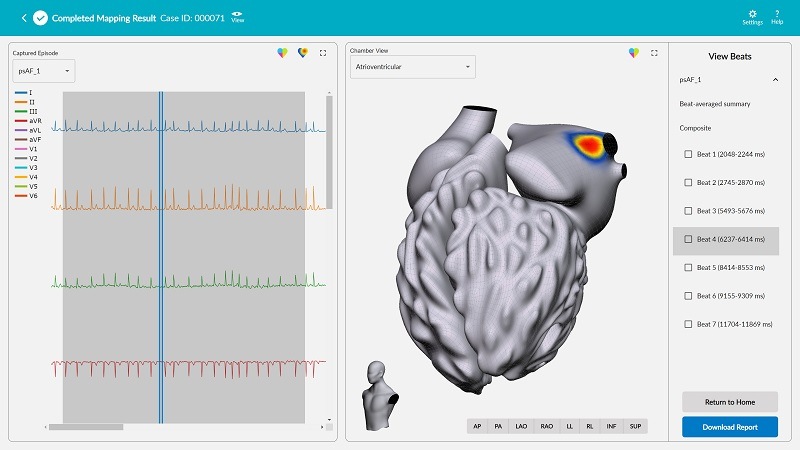 Vektor Medical has announced US Food and Drug Administration (FDA) 510(k) clearance for its novel computational electrocardiogram (ECG) mapping system, vMap.
Vektor Medical has announced US Food and Drug Administration (FDA) 510(k) clearance for its novel computational electrocardiogram (ECG) mapping system, vMap.
vMap is designed to map potential arrhythmia sources associated with stable or unstable arrhythmias anywhere in the heart—including all four chambers, the septal wall, and the outflow tracts – in less than three minutes using only ECG data, to improve outcomes in ablation procedures. Following clearance, the vMap system will be commercially available to sites across the USA.
“Traditional arrhythmia mapping techniques are labour- and time-intensive, and physicians are only able to achieve complete success in a limited number of ablation procedures due to the lack of information on arrhythmia source locations. To shorten procedure times and improve ablation success, electrophysiologists need to be able to visualise arrhythmia hot spots in the heart quickly and accurately,” said Amir Schricker, medical director of Cardiac Electrophysiology at Mills Peninsula Medical Center, Burlingame, USA. “Our clinical experience with vMap has been incredibly positive. Using non-invasive ECG data, the system is extremely simple and fast to use, and quickly provides a hot spot map so we know where to target our efforts without having to navigate the whole heart or order additional imaging.”
“Cardiac arrhythmias impact millions of people across the globe, increasing the risk of serious health-related issues, such as stroke, heart failure, and even death. Yet, today’s therapies have significant issues—drug therapy can have severe side effects and non-targeted ablation has disappointingly low success rates,“ said Vektor Medical CEO Mike Monko. “With vMap we are changing how electrophysiologists think about mapping. By providing a hot spot map in only minutes based on non-invasive ECG data, physicians can create a more effective ablation plan and spend less time finding target locations. Our goal is to increase first-pass success rates, lower risk, and decrease the current cost burden of ablation on the healthcare system.“












